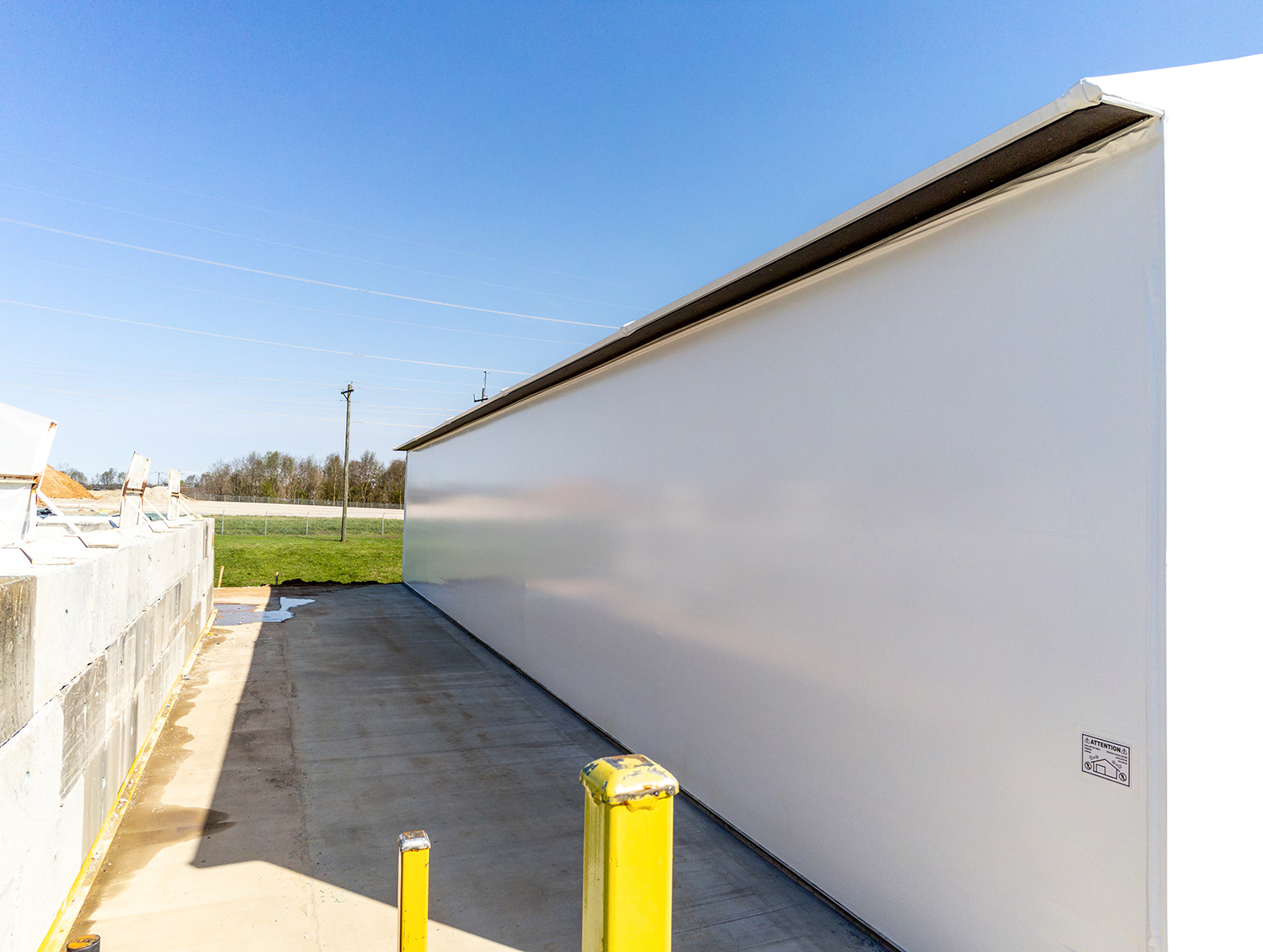Passive Ventilation for Tension Fabric Buildings

Just like people, buildings need fresh air. Proper ventilation boosts building performance and supports maximum longevity. It improves indoor air quality in terms of comfort and safety, whether you’re talking about a relatively small building or something as large as a bulk storage facility that encompasses tens of thousands of square feet.
Why Big, Spacious Buildings Need Ventilation
At first glance, clear-span buildings might seem to offer plenty of natural air circulation simply because there’s a lot of space and no interior walls to impede airflow. But a larger building footprint can actually work against you because air only flows so far on its own. Even free-span buildings with open walls can trap noxious, stagnant air inside, especially if the rooflines are high.
Free span tension fabric buildings are used across many industries, often for purposes that contribute to poor indoor air. For example, your building may be an equine arena, or it may be a commodity storage facility, where product(s) being stored can be hazardous to humans or the building itself. Adequate ventilation is critical for avoiding buildup of heat, humidity, volatile organic compounds off-gassed by products or livestock, or fumes from working vehicles.
Keeping the interior dry helps prevent:
- Rust and corrosion of steel structural components
- Degradation of certain commodities, such as salt or fertilizer
- Mold and mildew growth
- Dry rot in wooden buildings
Advantages of Passive Ventilation
HVAC and mechanized ventilation systems can certainly be added to free span tension fabric buildings to keep indoor air fresh and clean. However, passive systems are often all that are needed, and these systems offer multiple benefits for building owners and occupants:
- Simple design and installation at minimal cost compared to mechanical motors, ducting, filtration, etc.
- Zero ongoing ventilation-related energy costs (passive systems allow buildings to be located in remote areas where electricity is not even available)
- No noise
- Better indoor air quality
- Virtually no operation or maintenance time or cost since there are no moving parts
- Ability to maintain a comfortable working temperature inside more easily
- Reduced carbon footprint (for building owners concerned about sustainability)
Passive ventilation takes advantage of thermal convection properties to circulate air throughout the building. Cross ventilation moves air from one side to the other, and stack ventilation moves air from ground level upward, where it is removed via exhaust vents in the roof. Fresh air enters through soffits strategically placed along the sides and entire length of the building. Passive systems can also include cavity ventilation in lined buildings to help prevent condensation on enclosed steel framing.
Here’s an example of soffit ventilation incorporated into a Legacy fertilizer storage building.
Effective as passive systems can be, buildings that house animals, certain chemicals, or processes such as recycling, and those located in highly humid environments may require more forceful ventilation. In these cases, passive ventilation can easily be combined with active systems.
Implementing a Passive System in Your Building
Ventilation is vital no matter what materials you use to construct your clear-span building. Passive ventilation can work well with any of them, but there are some specific considerations:
- Steel long-span buildings are especially vulnerable to corrosion.
- The only way to construct a wood building with a clear span is with steel trusses, so the same issues regarding corrosion apply. Moisture can also cause dry rot or provide a friendly environment for termites or other pests that destroy wood.
- Legacy tension fabric buildings are becoming the go-to choice when clear span construction is required. Each building is custom-engineered, so passive ventilation can be designed to accommodate the building’s architectural features and intended purpose. Combined with our proprietary ExxoTec™ tension fabric, passive ventilation is just one way Legacy tension fabric buildings boost energy efficiency and savings.
If you’re in need of a free span fabric building for virtually any purpose, you owe it to yourself to learn how incorporating passive ventilation can improve your structure’s functionality, safety, and life span. It’s time to talk with one of our fabric building experts.
Subscribe to our Blog
Recent Posts
- 5 Factors Every Project Owner Should Consider Before Approving Building Materials
- The 20-Year View: How Material Choices Impact Long-Term Operational Costs
- Climate Resilience in Commercial Construction: Why Traditional Methods May Not Be Enough
- Speed and Quality: The Role of Hybrid Building Materials
- Beyond the Bleachers: Designing Visually Striking Sports Facilities

